Related Research Articles

Transcranial magnetic stimulation (TMS) is a noninvasive form of brain stimulation in which a changing magnetic field is used to cause electric current at a specific area of the brain through electromagnetic induction. An electric pulse generator, or stimulator, is connected to a magnetic coil, which in turn is connected to the scalp. The stimulator generates a changing electric current within the coil which induces a magnetic field; this field then causes a second inductance of inverted electric charge within the brain itself.
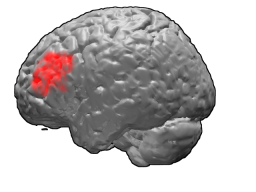
Brodmann area 46, or BA46, is part of the frontal cortex in the human brain. It is between BA10 and BA45.
Neurotechnology encompasses any method or device in which electronics interface with the nervous system to monitor or modulate neural activity.
Biological psychiatry or biopsychiatry is an approach to psychiatry that aims to understand mental disorder in terms of the biological function of the nervous system. It is interdisciplinary in its approach and draws on sciences such as neuroscience, psychopharmacology, biochemistry, genetics, epigenetics and physiology to investigate the biological bases of behavior and psychopathology. Biopsychiatry is the branch of medicine which deals with the study of the biological function of the nervous system in mental disorders.
Neurohacking is a subclass of biohacking, focused specifically on the brain. Neurohackers seek to better themselves or others by “hacking the brain” to improve reflexes, learn faster, or treat psychological disorders. The modern neurohacking movement has been around since the 1980s. However, herbal supplements have been used to increase brain function for hundreds of years. After a brief period marked by a lack of research in the area, neurohacking started regaining interest in the early 2000s. Currently, most neurohacking is performed via do-it-yourself (DIY) methods by in-home users.
Bioelectromagnetics, also known as bioelectromagnetism, is the study of the interaction between electromagnetic fields and biological entities. Areas of study include electromagnetic fields produced by living cells, tissues or organisms, the effects of man-made sources of electromagnetic fields like mobile phones, and the application of electromagnetic radiation toward therapies for the treatment of various conditions.

Transcranial direct current stimulation (tDCS) is a form of neuromodulation that uses constant, low direct current delivered via electrodes on the head. It was originally developed to help patients with brain injuries or neuropsychiatric conditions such as major depressive disorder. It can be contrasted with cranial electrotherapy stimulation, which generally uses alternating current the same way, as well as transcranial magnetic stimulation.
Theresa A. Jones is a researcher and professor at the University of Texas at Austin and the Institute for Neuroscience. Her interests are in neural plasticity across the lifespan, motor skill learning, mechanisms of brain and behavioral adaptation to brain damage, and glial-neuronal interactions. Her research is on the brain changes following stroke, in particular rehabilitation strategies and the brain changes associated with them. She primarily tests rats and uses the Endothelin-1 stroke model. Her most recent work has expanded into the field of microstimulation mapping of the rat cortex.
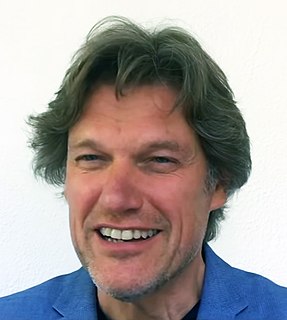
Steven Laureys is a Belgian neurologist. He is known as a clinician and researcher in the field of neurology of consciousness.
Arno Villringer is a director at the Max Planck Institute for Human Cognitive and Brain Sciences in Leipzig, Germany; director of the Department of Cognitive Neurology at University Hospital Leipzig; and Academic Director of the Berlin School of Mind and Brain and the Mind&Brain Institute, Berlin. He holds a full professorship at University of Leipzig and an honorary professorship at Charité, Humboldt-Universität zu Berlin.

Restorative neurology is a branch of neurology dedicated to improving functions of the impaired nervous system through selective structural or functional modification of abnormal neurocontrol according to underlying mechanisms and clinically unrecognized residual functions. When impaired, the body naturally reconstructs new neurological pathways and redirects activity. The field of restorative neurology works to accentuate these new pathways and primarily focuses on the theory of the plasticity of an impaired nervous system. Its main goal is to take a broken down and disordered nervous system and return it to a state of normal function. Certain treatment strategies are used to augment instead of fully replace any performance of surviving and also improving the potential of motor neuron functions. This rehabilitation of motor neurons allows patients a therapeutic approach to recovery opposed to physical structural reconstruction. It is applied in a wide range of disorders of the nervous system, including upper motor neuron dysfunctions like spinal cord injury, cerebral palsy, multiple sclerosis and acquired brain injury including stroke, and neuromuscular diseases as well as for control of pain and spasticity. Instead of applying a reconstructive neurobiological approach, i.e. structural modifications, restorative neurology relies on improving residual function. While subspecialties like neurosurgery and pharmacology exist and are useful in diagnosing and treating conditions of the nervous system, restorative neurology takes a pathophysiological approach. Instead of heavily relying on neurochemistry or perhaps an anatomical discipline, restorative neurology encompasses many fields and blends them together.
Transcranial pulsed ultrasound (TPU) uses low intensity, low frequency ultrasound (LILFU) to stimulate the brain. In 2002, Dr. Alexander Bystritsky first proposed the idea that this methodology contained therapeutic benefits. Beginning in 2008, Dr. William Tyler and his research team from Arizona State University began an investigation and development of this alternative neuromodulation without the harmful effects and risks of invasive surgery. They discovered that this low-power ultrasound is able to stimulate high neuron activity which allows for the manipulation of the brain waves through an external source. Unlike deep brain stimulation or Vagus nerve stimulation, which use implants and electrical impulses, TPU is a noninvasive and focused procedure that does not require the implantation of electrodes that could damage the nervous tissue. Its use is applicable in the various fields including but not limited to medical and military science. Although this technology holds great potential to introducing new and beneficial alternatives to conventional brain manipulation, it is a relatively young science and has certain obstructions to its full development such as a lack of complete understanding and control of every safety measure.

Switched On: A Memoir of Brain Change and Emotional Awakening is a work of nonfiction by John Elder Robison, chronicling the author's participation in a Transcranial Magnetic Stimulation study along with its after effects.
Neuromorality is an emerging field of neuroscience that studies the connection between morality and neuronal function. Scientists use fMRI and psychological assessment together to investigate the neural basis of moral cognition and behavior. Evidence shows that the central hub of morality is the prefrontal cortex guiding activity to other nodes of the neuromoral network. A spectrum of functional characteristics within this network to give rise to both altruistic and psychopathological behavior. Evidence from the investigation of neuromorality has applications in both clinical neuropsychiatry and forensic neuropsychiatry.
Berenson-Allen Center for Non-Invasive Brain Stimulation is a brain research institute at Beth Israel Deaconess Medical Center (BIDMC) of Harvard Medical School in the Longwood Medical and Academic Area of Boston, Massachusetts. The center is specialized in research, educating, and clinical care using non-invasive brain stimulation techniques such as transcranial magnetic stimulation (TMS), transcranial direct current stimulation (tDCS). Non-invasive brain stimulation is applied as a diagnostic and therapeutic tool on patients with various neuropsychiatric disorders like depression, schizophrenia, epilepsy, dystonia, Parkinson's disease, chronic pain, and the neurorehabilitation of motor function, cognition, and language after stroke or traumatic brain injury. Berenson Allen Center was previously directed by Prof. Alvaro Pascual-Leone.
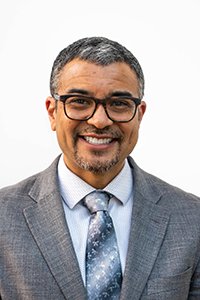
Roy Hamilton is an associate professor in the departments of Neurology and Physical Medicine and Rehabilitation at University of Pennsylvania (Penn). He is the Director of Penn's Laboratory for Cognition and Neural Stimulation (LCNS), and launched the Brain Stimulation, Translation, Innovation, and Modulation Center (brainSTIM) at the University of Pennsylvania in 2020.
Charlotte Stagg is a British neurophysiologist who is a Professor at the University of Oxford. She leads the Physiological Neuroimaging Group.
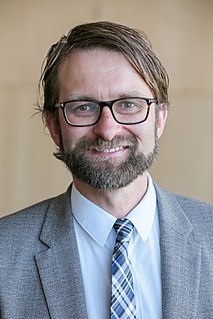
Friedhelm Christoph Hummel is a German neuroscientist and neurologist. A full professor at École Polytechnique Fédérale de Lausanne, he is the Defitech Chair of Clinical Neuroengineering, and the head of the Hummel Laboratory at EPFL's School of Life Sciences. He also is an associate professor of clinical neuroscience at the University of Geneva.
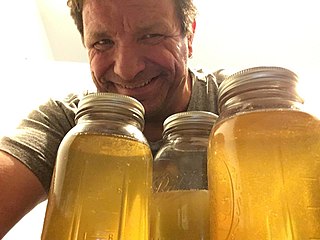
Julian Paul Keenan is a professor of biology at Montclair State University and director of the Cognitive Neuroimaging Laboratory. He was previously at Harvard Medical School and the Beth Israel Deaconess Medical Center in Boston.
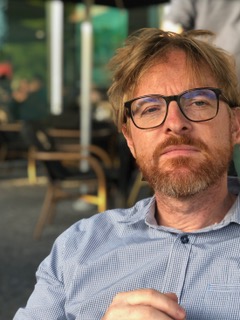
Alexander T. Sack is a German neuroscientist and cognitive psychologist. He is currently appointed as a full professor and chair of applied cognitive neuroscience at the Faculty of Psychology and Neuroscience at Maastricht University. He is also co-founder and board member of the Dutch-Flemish Brain Stimulation Foundation, director of the International Clinical TMS Certification Course, co-director of the Center for Integrative Neuroscience (CIN) and the Scientific Director of the Transcranial Brain Stimulation Policlinic at Maastricht University Medical Centre.